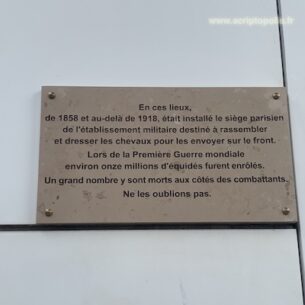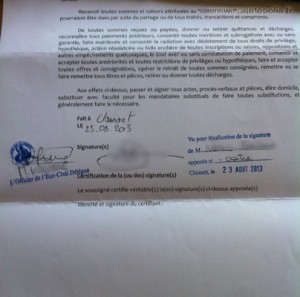Strengths and weaknesses
Clamart, August 2013.
Signature is both an amazing written object and an amazing scriptural gesture. We can experience it almost everyday, as we pay with a cheque, as we receive a parcel, as we check at the kids’ workbooks at the end of the week, but also when we get a new passport, or when we accept a work contract. Signing is validating, testifying, certifying, verifying, and a lot of other things. It is undoubtedly the most striking act when it comes to shed the light on the power of writing practices.
But signature is also fragile. It can be imitated, and without an original to compare with, to authenticate it is a hard time. Just ask art experts. And ask your daughter when she wants to play hooky. Signature is thus also a matter of routine and trust. We generally count on it, hoping nothing will break the sociographical chain meant to be consolidated. In some occasion though, trust is not enough. As I was supposed to send a document that would give the power of attorney to a clerk, I discovered that I could not sign it by myself. My signature had to be “legalized”. Not a big deal: I just had to go to the city hall and sign it in front of a civil servant who would check my ID card. But how would the document itself trace such an event? Via new marks with four distinct inking pads, and new writings: my full name, the exact place where my signature lies… and another signature.







